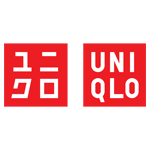In modern-day recruitment, discovering the best talent efficiently is a top priority for any company. Statistics show that it costs companies $17,000 every time if they hire the wrong talent; worse still, the average cost of a bad hire is up by 30% in recent years.
All in all, it’s a massive issue for companies!
So what’s the solution?
An employee referral program (ERP) is an useful option for finding quality talent—whereby employees become the catalysts for identifying and attracting new, top-tier candidates. It can smoothen the hiring process, leading to quicker, more affordable, and more effective hires.
In this article, we’ll detail the importance of ERPs by showing their significance in modern recruiting strategies. We’ll also offer practical insights into creating and building referral programs:
The Benefits of Employee Referral Programs
Employee referral programs offer many advantages for recruiters—from financial savings to better hires.
Here are some of the main benefits of using an ERP:
Cost Effectiveness
One of the most crucial aspects of recruitment is saving money. Many things cause financial loss: Bad hires, inefficient processes, and not understanding which roles you need to hire for. Unfortunately, these are all common mistakes for companies.
That said, once you use ERPs—you’ll reduce operational costs, boost inventory management, and improve resource allocation. And, in turn, your team will have more successful recruitment operations.
Faster Hires
Beyond their cost-effectiveness—which is very important—ERPs offer faster hiring processes while enhancing the quality of new hires.
One of the biggest reasons for increased financial costs is a recruitment drive that lasts too long, thus increasing resources spent and reducing focus on other critical aspects of the company.
In addition, leveraging the existing network of employees expedites the identification of suitable candidates and grows community and trust within the workplace. In turn, this creates a win-win scenario for both employers and employees.
Data-Driven Decision Making
Recruitment ERP systems centralize candidate data and offer a comprehensive view of each applicant’s qualifications, skills, and interview performance. This consolidated data facilitates better-informed hiring decisions based on a candidate’s fit with both the position and the organization.
In addition, advanced ERP systems may incorporate predictive analytics to assess the likelihood of a candidate’s success in a particular role.
Enhanced Collaboration and Communication
ERP systems build collaboration among different departments involved in the recruitment process—including HR, hiring managers, and interviewers. This leads to seamless communication, shared insights, and a cohesive approach to talent acquisition.
Likewise, ERP systems often include features for interview scheduling and feedback collection. For instance, recruiters and hiring managers can coordinate interviews, provide feedback, and make collaborative decisions within the system.
How to Set Up Your Employee Referral Program
Initiating an employee referral program involves strategic planning; success doesn’t always come from the onset.
Here’s a step-by-step guide to starting an ERP program:
1. Define Your Recruitment Objectives
You should clearly outline the specific recruitment goals to achieve by implementing the ERP system.
Whether it’s reducing hiring costs, improving candidate experience, or enhancing collaboration among hiring teams—having clear objectives will guide your setup process.
2. Conduct a Recruitment Process Assessment
You should consider evaluating your current recruitment processes to identify pain points and areas for improvement.
In addition, engage with hiring managers, recruiters, and HR professionals to gather insights into the challenges they face and expectations for the new system.
3. Select the Right Recruitment ERP Solution
You must research and choose an ERP system tailored for recruitment that matches your organizational needs. Therefore, look for pre-built features—such as applicant tracking, resume parsing, interview scheduling, and onboarding capabilities.
Furthermore, pick a solution that easily integrates with your existing HR and talent management systems.
4. Setup Team for ERP Implementation
You should also create a setup team comprising HR professionals, recruiters, and IT specialists.
In turn, this team will oversee the setup process—ensuring that the ERP system is configured to meet the specific requirements of your recruitment objectives.
5. Data Migration and Cleanup
Your company should migrate existing candidate data to the new ERP system to ensure data accuracy and relevance.
Therefore, cleanse the data to remove duplicates and organize it for easy retrieval. This key step smoothens the transition without compromising historical candidate information.
6. Configure Recruitment Workflows
Customize the ERP system to align with your recruitment workflows; configure the system to handle job postings, candidate screening, interview processes, and offer management according to your organization’s established practices.
7. Offer User Training
You should deliver focused training for recruiters, hiring managers, and other users involved in the recruitment process.
For instance, the training should cover essential aspects—such as system navigation, utilizing recruitment modules, and maximizing features for effective talent acquisition.
How to Build an Employee Referral Program
To grow the effectiveness of ERP programs—you must align them with your recruitment strategy.
Here’s the top ways to build an employee referral program:
Prioritize Hiring Needs
Start by understanding the immediate and future hiring needs of your organization. You should identify positions that are critical for achieving business objectives or roles challenging to fill through traditional methods.
Likewise, focus on positions that align with the current and future strategic goals of the organization. This ensures that the employee referral program contributes directly to achieving broader business objectives.
You should also communicate the prioritized hiring needs to employees by emphasizing the importance of their referrals in filling these specific roles. As a result, you’ll develop a sense of purpose and urgency within the workforce.
Define Candidate Personas
You should work with hiring managers and HR professionals to define candidate personas for the prioritized roles; identify the skills, experience, and cultural fit that are essential for success in these positions.
After that, encourage employees to share insights about the characteristics and qualities of successful colleagues. This can contribute to the creation of detailed and accurate candidate personas.
You should also craft targeted and personalized referral messages that resonate with employees and align with the identified candidate personas. Highlight the specific qualities that make a candidate an ideal fit for the organization and the prioritized roles.
Continually Review and Refine
Conduct periodic reviews of hiring needs—considering changes in business priorities, industry trends, and shifts in the competitive landscape. You should adjust the focus of the referral program to align with evolving organizational requirements.
You should also establish a feedback loop with employees participating in the referral program; understand their experiences, challenges, and suggestions for improvement. This ensures the program remains relevant and engaging.
Finally, always review the success of employee referrals in filling prioritized roles and analyze the quality and quantity of referrals, time-to-fill metrics, and the overall impact on the recruitment strategy.
Promote Program Visibility
Regularly communicate the importance of the employee referral program through internal channels—such as company newsletters, intranet, or team meetings. Keep employees informed about current hiring needs and the impact of their referrals.
You should also implement a structured recognition and rewards system for employees who make successful referrals; acknowledge their contributions publicly, and consider offering incentives that align with the company culture and values.
After that, provide employees with the necessary tools and resources to become effective referrers, including training sessions on effective networking, communication strategies, and updates on the company’s current hiring landscape.
How To Incentivize Employee Participation
There are many ways to encourage your employees to get involved with an ERP recruitment drive.
Here’s how you can achieve that:
- Monetary Rewards: Offer competitive cash bonuses for successful referrals, with varying amounts based on the level of the position or the rarity of the skill set.
- Recognition Programs: Establish a recognition program that publicly acknowledges employees who consistently contribute high-quality referrals; this could include features in company newsletters, shout-outs in meetings, or a dedicated “Referrer of the Month” recognition.
- Career Development Opportunities: You should provide opportunities for career advancement or skill development as a referral incentive, including mentorship programs, access to training courses, or consideration for special projects.
- Flexible Work Arrangements: You can introduce flexible work arrangements or additional days off as a reward for successful referrals. This recognizes the value of an employee’s time and contributions to the recruitment process.
- Company Swag and Perks: Offer branded merchandise—such as company apparel or tech gadgets—as a tangible token of appreciation. Also, consider extending exclusive perks, such as gym memberships or discounts on company products.
- Tiered Rewards System: Implement a tiered rewards system where employees receive escalating benefits for each successful referral. You’ll create a sense of achievement and motivation to continue participating in the program.
Evaluating and Adjusting Your Program
Once you’ve established your 2024 ERP, you may need to adjust it if the results aren’t what you expected.
You should consider the following:
- Key Performance Indicators (KPIs): You should clearly identify and define the key performance indicators (KPIs) that align with your program’s objectives. The common metrics include the number of referrals, the quality of hires, time-to-fill, and the overall impact on recruitment costs.
- Feedback from Participants: You should conduct surveys or focus group sessions to gather feedback from employees who have participated in the referral program; insights into their experiences, challenges, and suggestions can inform necessary adjustments.
- Analyze Program Data: You must leverage data analytics tools to analyze the performance data of the employee referral program. Examine referral sources, conversion rates, and the effectiveness of different incentives to identify patterns and trends.
- Evaluate Quality of Hires: Look at the performance and retention of staff hired via the referral program. Be sure to compare their success metrics with those of candidates hired through other channels to gauge the program’s impact on overall workforce quality.
Review Program Costs: You must know the cost-effectiveness of the program by comparing the expenses associated with rewards and bonuses against the benefits derived from successful referrals. This analysis ensures that the program aligns with budgetary considerations.
Frequently Asked Questions
What is an Employee Referral Program?
An employee referral program is a strategic recruitment approach where existing employees recommend qualified candidates for job openings within their organization.
These programs harness the power of internal networks to identify potential hires and build a sense of community among employees.
What Makes a Referral Program Successful?
A successful referral program is achieved by clear communication, meaningful incentives, and seamless integration into the overall recruiting strategy. It’s also crucial that the program aligns with the organization’s culture and values for long-term success.
How Can I Enhance the Referral Experience?
To enhance the referral experience, focus on transparent communication about the program, offer appealing incentives, and recognize and reward employees promptly for successful referrals.
Additionally, creating a positive work environment that encourages collaboration and networking can contribute to an enriched referral experience.
How Can I Measure the Success of My Employee Referral Program?
Success can be measured through key performance indicators (KPIs)—such as the number and quality of referrals, time-to-fill metrics, and the retention rates of referred hires.
You should always analyze data and gather feedback to assess the overall impact on recruitment efficiency.
Can Employee Referral Programs Help Improve Employee Retention?
Yes, employee referral programs often result in hires who are a cultural fit, leading to higher job satisfaction and increased retention.
Additionally, the sense of community and shared responsibility for bringing in new talent can contribute positively to employee morale and retention.
Is Anonymity Maintained in Employee Referral Programs?
Many organizations offer the option for employees to make referrals anonymously.
However, it’s essential to communicate the organization’s policy on anonymity clearly to ensure transparency and build trust among employees participating in the program.
Final Thoughts
An effective Employee Referral Program is not just a recruitment strategy: It’s a cultural catalyst that can transform the way your business attracts and retains top talent.
You can easily create a referral program that resonates with your workforce; it will propel your company towards sustained success in talent acquisition. However, you should follow the guidelines in this article to achieve success.
At GrabJobs, we can help you hire the best talent in 2024 for any industry. Contact us if you have any questions!
























